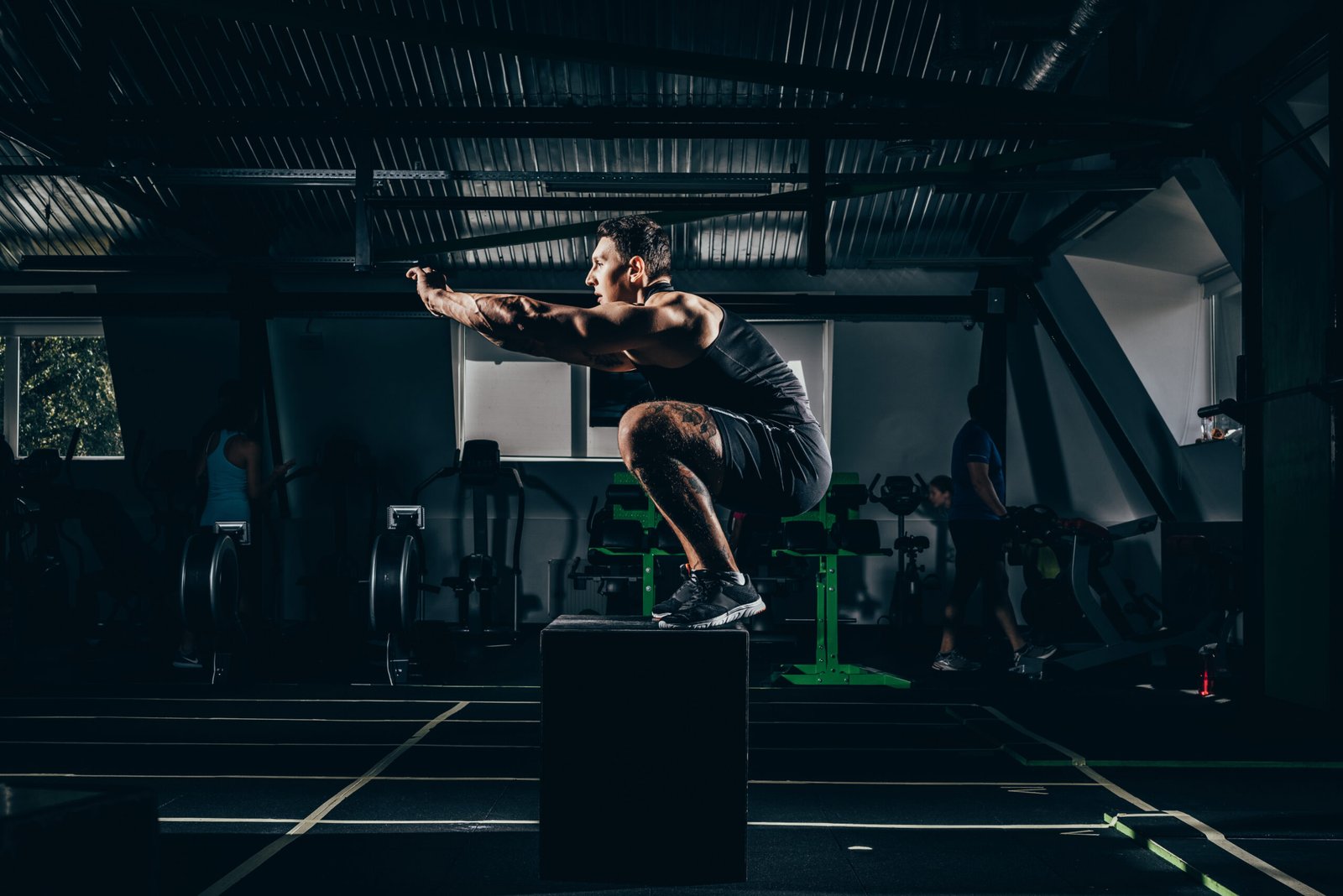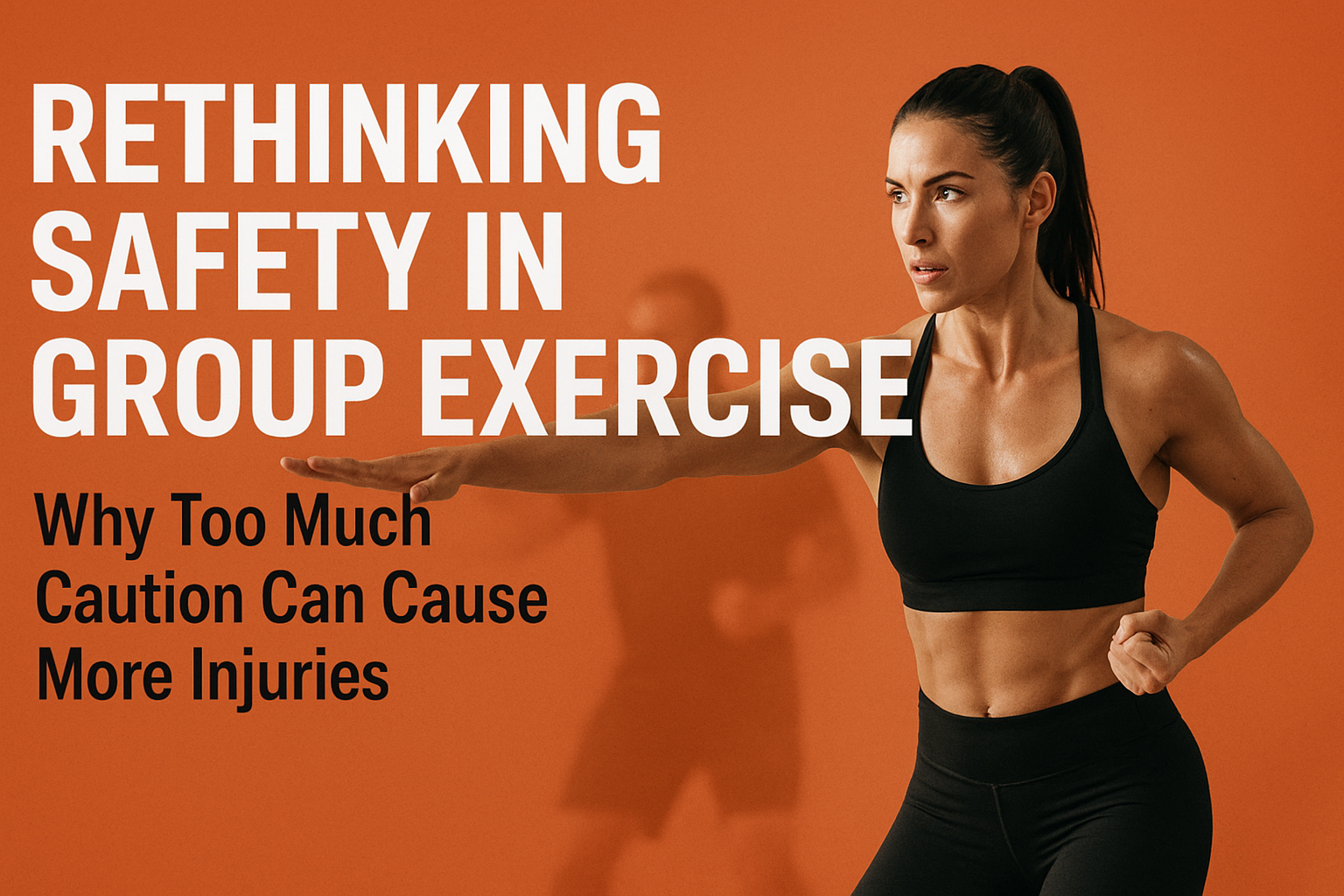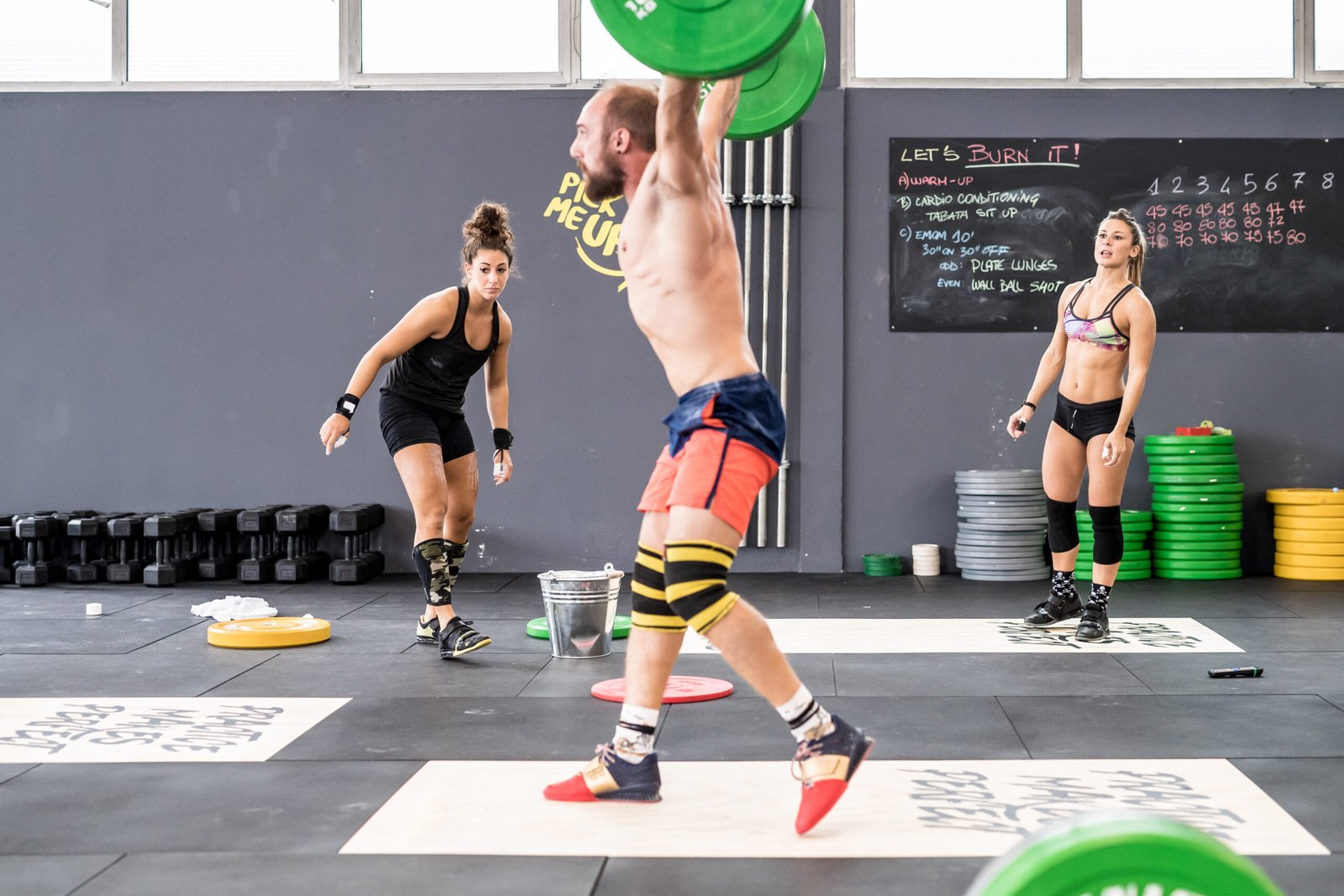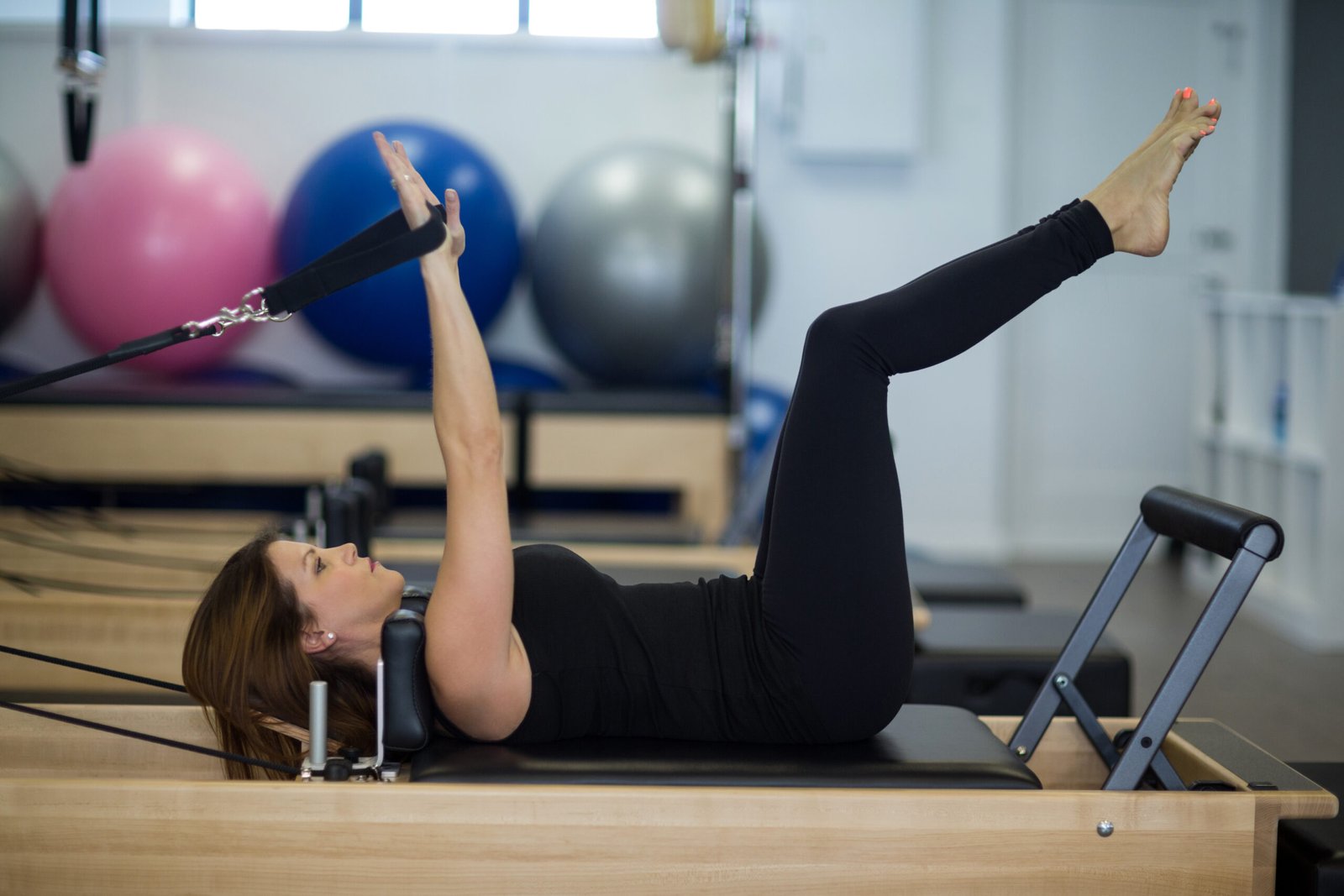Plyometric training has gained significant attention in the world of sports for its ability to enhance explosive power and improve athletic performance. By focusing on dynamic and powerful movements, plyometrics helps athletes achieve greater muscle strength and speed, crucial for excelling in sports that require quick and forceful actions. In this blog post, we will explore how plyometrics can unlock explosive power in sports performance. From understanding the basic principles to incorporating specific exercises, we’ll cover everything you need to know to transform your athletic game.
Plyometric Training for Explosive Power
Plyometric training, a method that amplifies the power and speed of movements, is pivotal in enhancing explosive power—a vital aspect for athletes engaged in sports that demand brisk, forceful motions. Utilizing the stretch-shortening cycle of muscles, plyometrics helps in optimizing both muscle coordination and neurological efficiency through explosive movements such as jumps, bounds, and rapid directional changes. Over time, athletes who commit to consistent plyometric workouts experience significant increases in muscle strength, reduced reaction times, and heightened overall athletic performance.
Meaningful improvements in an athlete’s performance can be attributed to the structured inclusion of plyometric exercises. The method involves stretching the muscle before a contraction, which stores energy that is later released explosively. This principle allows for more efficient movements—be it in accelerating rapidly on a field or leaping for a slam dunk. Consistent engagement in plyometric training strengthens muscle fibers and refines motor skills, minimizing the risk of injuries often caused by abrupt and forceful movements.
– Jumps: Enhances lower body strength and coordination.
– Bounds: Significantly improves leg power and stride length in runners.
– Rapid Directional Changes: Boosts agility and reaction times on the field.
– Muscle Coordination: Increased neuromuscular efficiency for better control and power.
By gradually introducing more complex and intense plyometric drills, athletes can progressively boost their explosive strength and minimize injury risks—key components to optimizing sports performance.
Effects of Plyometric Training on Physical Performance: An Umbrella Review
| Physical Performance Area | Plyometric Exercises | Benefits |
|---|---|---|
| Vertical Jump Height | Box Jumps, Depth Jumps | Increases jump height for sports like basketball and volleyball |
| Sprint Speed | Sprint Drills, Bounding | Enhances running speed and stride length for track and field athletes |
| Dynamic Balance | Jumping Lunges, Box Drills | Improves stability and body control during high-speed movements |
| Agility | Lateral Plyo Jumps, Cone Drills | Boosts quick directional changes for sports like soccer and tennis |
| Muscle Coordination | Jump Squats, Medicine Ball Throws | Refines neuromuscular efficiency, improving reaction times |
| Overall Athletic Performance | Depth Jumps, Bounding | Contributes to faster and more forceful movements across sports |
Plyometric training is renowned for its ability to dramatically enhance explosive power by boosting muscle strength and speed—elements that are paramount in excelling at sports. Employing exercises like jump squats and bounding, this training discipline efficiently conditions the neuromuscular system to produce rapid and powerful movements. Athletes who engage in regular plyometric workouts often observe improvements in agility, faster sprint times, and more robust overall athleticism, thereby directly impacting their sports performance positively.
The umbrella review of plyometric effects reveals pivotal benefits, such as increased efficiency in the stretch-shortening cycle, which is essential for executing explosively powerful movements. These adaptations lead athletes to achieve notable enhancements in vertical jump height, sprint speed, and dynamic balance—critical factors that define top-level athleticism. The improvements in agility and explosive power are directly linked to the optimized functioning of neuromuscular pathways within athletes engaged in sports activities involving rapid movements.
– Vertical Jump Height: A key measure in sports like basketball and volleyball.
– Sprint Speed: Vital for track and field, football, and rugby players.
– Dynamic Balance: Crucial for maintaining stability during high-speed actions.
– Agility: Enhances capability to make quick, precise movements in sports.
Such remarkable gains make plyometric training an indispensable tool for athletes aiming to elevate their physical performance and achieve competitive advantages.
Effect of Plyometric Training on Sprint Time
| Plyometric Exercise | Targeted Muscle Group | Primary Benefit |
|---|---|---|
| Box Jumps | Lower Body (Quads, Hamstrings) | Develops explosive lower body strength and speed |
| Depth Jumps | Lower Body (Calves, Glutes) | Improves reaction time and vertical leap |
| Bounding | Lower Body (Glutes, Hamstrings) | Enhances stride length and frequency for sprinters |
| Medicine Ball Throws | Upper Body (Shoulders, Core) | Strengthens core and upper body explosiveness for sports |
| Jump Squats | Lower Body (Quads, Glutes) | Increases explosive strength in the legs for jumps |
| Plyometric Push-Ups | Upper Body (Chest, Shoulders) | Boosts upper body explosive strength |
Plyometric training plays a substantial role in reducing sprint times by augmenting explosive strength and power. Exercises like box jumps, depth jumps, and bounding are vital as they enhance muscle elasticity and facilitate the rapid production of force crucial for swift running. This type of training fine-tunes neuromuscular efficiency, allowing athletes to execute quicker muscle contractions during sprinting. Ultimately, incorporating plyometrics into workouts fosters superior coordination and balance, contributing to faster sprint speeds.
Elaborating on its impact, plyometric training builds upon the principles of muscle elasticity and rapid force production which are fundamental in propelling an athlete forward quickly and effectively. Performing exercises like box jumps and depth jumps stimulate the activation of fast-twitch muscle fibers, enhancing their firing rate, which is essential for quick sprints. Additionally, such training promotes muscle synergy—ensuring that muscles work in a coordinated manner to propel athletes quickly and smoothly through sprints.
– Box Jumps: Develop lower body explosiveness and speed.
– Depth Jumps: Improve reactivity and rapid force development.
– Bounding: Enhances stride length and overall running speed.
– Coordination: Better neuromuscular synchronization for fluid motion.
By integrating plyometrics, athletes across various levels can notice vast improvements in their sprint performance, cementing it as a core component of speed training regimens.
Effect of Plyometric Training on Change of Direction Ability
| Plyometric Exercise | Focus Area | Benefit |
|---|---|---|
| Lateral Plyo Jumps | Lateral Agility | Increases side-to-side speed and agility |
| Cone Drills | Directional Shifts | Improves precise directional changes and footwork |
| Reactive Plyometrics | Quick Reaction Time | Enhances ability to respond quickly to sudden changes |
| Single-Leg Hops | Leg Strength & Coordination | Improves one-legged power, useful for cutting and pivoting |
| Jumping Lunges | Lower Body Coordination | Builds explosive strength and agility for fast turns |
Plyometric training is instrumental in honing an athlete’s ability to change direction swiftly and efficiently, a skill fundamental in sports. Such training refines neuromuscular coordination, enabling athletes to execute quick and precise directional movements essential for on-field success. By integrating focused plyometric exercises into their routines, athletes can witness increased agility and reduced reaction times, which are crucial during swift sport-specific maneuvers.
Incorporating plyometric exercises addresses the intricacies of enhancing change-of-direction (COD) abilities, promoting the development of agility and quickness. Training programs feature exercises that enhance muscle power and coordination, allowing for increased fluidity in motion. This advantage is particularly beneficial in sports like basketball, football, and soccer, where rapid directional shifts determine performance outcomes. Additionally, regular plyometric workouts improve tendon and muscle strength, contributing to reduced injury risks linked with abrupt directional changes.
– Lateral Plyo Jumps: Boost side-to-side agility.
– Cone Drills: Refine directional changes with controlled movements.
– Reactive Plyometrics: Enhance reaction time for unpredictable shifts.
– Muscle Strengthening: Minimizes injuries during quick turns.
By focusing on COD capabilities, athletes can maximize their effectiveness in sports performance, ensuring swift and precise movements with minimized injury risks.
Effect of Plyometric Training on Maximal Strength
| Neuromuscular Efficiency | Plyometric Exercise | Impact on Performance | Sport-Specific Benefits |
|---|---|---|---|
| Firing Rate of Fast-Twitch Fibers | Depth Jumps, Jump Squats | Increases the speed and power of muscle contractions | Improves sprinting and jumping performance for sprinters, jumpers |
| Muscle Coordination | Plyometric Push-Ups, Box Jumps | Enhances coordination between muscles for rapid movements | Boosts agility and power for basketball, football, and soccer |
| Movement Efficiency | Bounding, Tuck Jumps | Improves muscle synchronization, making movements more fluid | Crucial for fast-paced sports like soccer, rugby, and tennis |
| Reaction Time | Lateral Plyo Jumps, Cone Drills | Reduces reaction time, improving quick response during play | Beneficial for defense in basketball, agility in football |
| Power Output | Medicine Ball Throws, Jump Squats | Increases overall power output and force generation | Improves performance in strength and power-based sports like weightlifting or football |
Plyometric training is a potent approach for enhancing maximal strength by utilizing explosive, high-intensity exercises that stress quick muscle contractions. It specifically targets the activation of fast-twitch muscle fibers—the ones crucial for developing significant power and speed in athletes. Incorporating plyometrics into a regular training regimen results in substantial improvements in overall athletic performance, particularly in sports requiring instant bursts of speed and power.
This type of training amplifies maximal strength by compelling muscles to contract swiftly in a high-force environment, stimulating muscular strength gains. Exercises like plyometric push-ups, jump squats, and various bounds increase the recruitment of fast-twitch fibers, thereby enhancing strength and power output. Furthermore, these exercises are instrumental in boosting neuromuscular efficiency, ensuring that the muscles and neurons communicate efficiently for better coordination and agility. Athletes thus notice benefits in key performance areas such as vertical jump, sprint times, and overall field performance.
– Plyometric Push-Ups: Enhance upper body power.
– Jump Squats: Develop lower body strength and coordination.
– Bounds: Focus on improving leg explosiveness.
– Neuromuscular Efficiency: Better communication between the nervous system and muscles.
With a structured plyometric routine, athletes can witness significant gains in strength and power, translating into improved prowess in their respective sports.
Effect of Plyometric Training on Muscular Power and Explosive Strength
| Plyometric Exercise | Targeted Muscle Group | Key Benefit | Sports Application |
|---|---|---|---|
| Box Jumps | Quadriceps, Hamstrings, Calves | Improves explosive lower body power and jump height | Basketball, Volleyball, Track & Field |
| Depth Jumps | Calves, Quads, Glutes | Enhances vertical jump and landing stability | Basketball, Volleyball, High Jump |
| Jump Squats | Glutes, Quads, Hamstrings | Builds strength and power for sprinting and jumping | Football, Track & Field, Basketball |
| Broad Jumps | Hamstrings, Glutes, Calves | Improves horizontal jump distance and lower body explosiveness | Track & Field, Basketball, Volleyball |
| Single-Leg Hops | Glutes, Quads, Calves | Strengthens each leg independently, useful for single-leg performance | Long Jump, Hurdles, Soccer |
Plyometric training profoundly enhances muscular power by centering on swift, explosive movements such as jumps and sprints, which are essential for peak sports performance. This discipline effectively improves the activation and recruitment of fast-twitch muscle fibers, leading to heightened explosive strength. Regular inclusion of plyometric exercises magnifies the neuromuscular system’s efficiency, contributing to swifter reaction times and augmented agility.
Focusing on muscular power, plyometric training emphasizes the importance of utilizing quick, explosive movements to elevate sports performance. The training capitalizes on the stretch-shortening cycle, improving the body’s ability to generate force rapidly and efficiently. This leads to a noticeable increase in agility, necessary for sports involving sudden accelerations and decelerations. By strengthening fast-twitch fibers through targeted exercises, athletes gain advantages in speed, power, and overall field performance—a compelling reason to integrate these workouts into regular training.
– Jump Training: Increases leg power for improved jump height.
– Sprint Drills: Boost speed and accelerate muscle reaction times.
– Circuit Plyometrics: Elevate aerobic capacity alongside explosive strength.
– Neuromuscular System: Optimizes muscle firing patterns for agility.
Implementing such training ensures athletes can harness explosive power effectively, giving them a competitive edge in challenging sporting environments.
Effect of Plyometric Training on Vertical and Horizontal Jump Performance

Plyometric training significantly boosts both vertical and horizontal jump performance—skills crucial for athletes in sports domains like basketball, volleyball, and track. This training method enhances muscle power and efficiency by utilizing the stretch-shortening cycle, enabling quicker and more forceful movements. Structured plyometric routines promote neuromuscular adaptations, leading to coordinated and explosive actions on the field.
In terms of jump performance, plyometrics plays an essential role by systematically strengthening the muscles involved in jumping actions. Through exercises like box jumps and depth jumps, athletes can improve the efficiency of their jump technique, leading to marked improvements in both height and distance. Plyometric training helps in the development of muscular elasticity and power while fostering faster muscle contractions, critical for executing effective jumps during sports activities.
– Box Jumps: Enhance explosive power for vertical leap.
– Broad Jumps: Develop distance and horizontal jump strength.
– Depth Jumps: Perfect reactive strength for maximizing jump potential.
– Muscle Elasticity: Vital for effective and powerful leaps.
By incorporating plyometric drills into training, athletes can achieve substantial improvements in jump ability, significantly benefiting their sports performance and ensuring dominance in competitive environments.
Effect of Plyometric Training on Additional Outcomes
Beyond explosive power enhancement, plyometric training yields remarkable improvements in other critical athletic metrics. This training modality not only amplifies muscular strength but also elevates coordination and agility, ensuring athletes can perform complex movements with precision. Exercises that emphasize quick, potent actions lead to gains in vertical jump height and reduced sprint times, while regular practice improves neuromuscular adaptation, enhancing overall athletic efficiency.
Elaboration of additional outcomes demonstrates the broad spectrum of physical benefits plyometrics offers athletes. The dynamic nature of exercises underscores improvements in balance and stability, critical for executing athletic maneuvers without succumbing to injuries. By engaging in such training, athletes develop better motor control and sensory responses, which are vital for sustaining high levels of performance across a range of sports activities.
– Coordination: Refines movement synchronization and precision.
– Agility: Crucial for swift, multidirectional moves.
– Balance: Essential for stability during rapid actions.
– Stability: Reduces injury risks by strengthening joint support.
The overall enhancements in physical attributes from plyometric training make it an effective approach for anyone aiming to boost their sports performance and establish athletic prowess.
Effect of Plyometric Training on Physical Performance in Non-athletes
| Physical Performance Area | Plyometric Exercises | Benefit for Non-Athletes | Application in Everyday Activities |
|---|---|---|---|
| Muscle Strength | Jump Squats, Box Jumps, Depth Jumps | Increases muscle power in the legs and core, leading to better overall strength | Helps with tasks requiring lower body strength, such as lifting or climbing |
| Cardiovascular Health | Plyometric Push-Ups, Medicine Ball Throws | Elevates heart rate, improving cardiovascular endurance | Enhances stamina for daily activities and helps with weight management |
| Balance and Coordination | Jumping Lunges, Single-Leg Hops | Improves proprioception and body control, reducing fall risks | Helps maintain balance during tasks like walking, climbing stairs, or carrying items |
| Explosive Strength | Bounding, Tuck Jumps | Builds power for more efficient movement and quicker reactions | Useful in activities requiring quick bursts of energy, such as running to catch something |
| Agility | Lateral Plyo Jumps, Cone Drills | Enhances quick, precise movements and reaction time | Improves ability to change direction quickly during sports or fitness routines |
| Muscle Endurance | Circuit Plyometrics, Jump Squats | Increases stamina and endurance for sustained physical efforts | Helps with prolonged physical tasks like cleaning or gardening without fatigue |
| Joint Health | Depth Jumps, Jump Squats | Strengthens tendons and ligaments, reducing injury risks | Reduces joint discomfort and strengthens the body for daily activities like walking or bending down |
Plyometric training extends beyond athletes and is remarkably effective in enhancing explosive power and overall physical performance in non-athletes. It incorporates dynamic, high-intensity exercises that contribute to improved muscle strength, speed, and agility. For non-athletes, regular plyometric sessions can result in significant leaps in jump height, sprint speed, and rapid directional shifts, benefiting those looking to elevate their athletic capabilities and physical fitness.
Non-athletes can derive substantial benefits from engaging in plyometric training as it fosters better coordination and balance, foundational elements of robust physical health. Plyometric exercises target multiple muscle groups, promoting comprehensive improvements in fitness and muscle endurance. These enhancements minimize the risk of injuries in everyday activities by strengthening joints and muscles while refining the body’s response to rapid or unforeseen movements.
– Dynamic Fitness: Improves overall conditioning and strength.
– Coordination: Facilitates better control in physical activities.
– Agility Training: Enhances speed and lateral movements.
– Muscle Endurance: Heightens resilience and stamina for longer activities.
Embracing such training programs provides non-athletes with essential physical improvements, bridging the gap from mere fitness enthusiasts to individuals equipped for higher intensity and performance activity settings.
Effect of Plyometric Training on Physical Performance of Athletes in Different Sports
| Sport | Key Benefit of Plyometrics | Specific Exercise |
|---|---|---|
| Track & Field (Sprinters) | Boosts sprint speed and vertical jump | Box Jumps, Sprint Drills |
| Basketball | Improves vertical leap for dunking and rebounding | Depth Jumps, Medicine Ball Throws |
| Volleyball | Increases jump height for spiking and blocking | Jump Squats, Plyometric Push-Ups |
| Soccer | Enhances agility and quick directional changes | Lateral Plyo Jumps, Cone Drills |
| Martial Arts | Builds explosive strength for powerful strikes | Plyometric Push-Ups, Jump Squats |
| Tennis | Improves footwork and agility for court coverage | Box Jumps, Lateral Plyo Jumps |
Plyometric training plays a quintessential role in enhancing explosive power, crucial for sharpening athletic performance across various sports disciplines. By concentrating on rapid muscle contractions, it significantly boosts muscle strength, speed, and agility in athletes. Integrating plyometrics into training regimens leads to notable improvements in jump height, sprint speed, and overall power output, benefitting athletes involved in disciplines like basketball, soccer, and track and field.
For athletes from diverse sporting backgrounds, plyometric training forms the cornerstone of strength and conditioning programs due to its ability to refine essential performance skills. The versatility of plyometric exercises allows athletes to target sport-specific movements, ensuring they gain agility, power, and speed benefits that align closely with the demands of their respective sports. Regular plyometric workouts not only amplify performance but also strengthen muscles, reducing the likelihood of injuries by enhancing neuromuscular control.
– Sport-Specific Drills: Tailored exercises to meet unique sport demands.
– Jump Training: Elevate basketball and volleyball performance.
– Agility Work: Essential for soccer tackling and movement.
– Speed Drills: Boost track performance through optimized sprint mechanics.
The inclusion of plyometrics in training is indispensable for athletes intent on achieving peak performance and sustaining competitiveness within their sports careers.
Effect of Plyometric Training on Physical Performance in Different Age Groups
Plyometric training confers substantial advantages in boosting explosive power, contributing significantly to enhanced sports performance across diverse age groups. Young athletes often experience quick gains in speed and agility due to their adaptability and rapid physiological response to plyometric exercises. In adults, plyometric training is crucial for maintaining muscle strength and power, both essential for remaining competitive in sports.
Older populations can greatly benefit from plyometrics as it assists in counteracting the effects of age-related muscle deterioration, promoting enhanced balance and reducing injury risks. Moreover, plyometric training plays a pivotal role in providing long-term health benefits, helping individuals of all ages develop and maintain explosive power critical for sports performance. For younger athletes, integrating plyometric exercises into their training routines can enhance muscular strength and agility, leading to improved sprint times and vertical jumps. Middle-aged individuals can also experience significant gains in overall fitness levels, which contributes to better sports performance and endurance. By targeting fast-twitch muscle fibers, plyometrics helps in maximizing power output, thereby allowing athletes to excel in dynamic movements essential for sports like basketball, soccer, and track and field events. Incorporating these exercises, popular among athletes and fitness enthusiasts alike, can significantly elevate one’s athletic prowess.
1. What is plyometrics and how does it help improve explosive power in athletes?
| Aspect | Description | Plyometric Exercises | Resulting Benefits for Athletes |
|---|---|---|---|
| Stretch-Shortening Cycle | A muscle lengthens (eccentric phase) before rapidly shortening (concentric phase), storing energy for explosive movement | Depth Jumps, Box Jumps, Medicine Ball Throws | Enables athletes to generate more force in a shorter period of time, improving speed and power |
| Fast-Twitch Muscle Fibers | Plyometrics activates fast-twitch fibers responsible for rapid, explosive movements | Jump Squats, Bounding, Tuck Jumps | Increases strength and speed in activities requiring quick bursts of energy |
| Muscle Coordination | Plyometric exercises train muscles to work together efficiently for rapid movement | Plyometric Push-Ups, Lateral Plyo Jumps | Enhances neuromuscular control, reducing lag time between muscle activation and movement |
| Neuromuscular Efficiency | Plyometric training improves communication between muscles and the nervous system for quicker responses | Reactive Plyometrics, Medicine Ball Throws, Cone Drills | Increases reaction time and coordination, essential for fast-paced sports |
| Explosive Power Development | Focuses on the rapid production of force to generate explosive movements | Depth Jumps, Jump Squats, Plyometric Push-Ups | Builds strength for activities like jumping, sprinting, and tackling |
| Injury Prevention | Regular plyometric training helps improve muscle and tendon strength, reducing injury risk | Jumping Lunges, Box Jumps, Bounding | Improves joint stability and strengthens muscles to withstand high-intensity movements, reducing injury risks |
Plyometrics, often referred to as “jump training,” consists of exercises that enable a muscle to reach its maximum force in the shortest possible time. This type of training leverages the stretch-shortening cycle of muscles, where a rapid eccentric contraction (muscle lengthening) is immediately followed by a concentric contraction (muscle shortening). This method helps athletes enhance their explosive power, a critical element in sports performance. By incorporating plyometric exercises such as box jumps, depth jumps, and bounding into their training routine, athletes can improve their speed, agility, and overall power output. This is particularly beneficial in sports that require quick bursts of movement, such as basketball, soccer, and track and field. These high-intensity movements teach muscles to contract more quickly and forcefully, which in turn enhances performance on the field, court, or track. Moreover, regular plyometric training can lead to improved neuromuscular efficiency, allowing athletes to better coordinate movements and maintain stability during dynamic actions, ultimately giving them a competitive edge.
– Box Jumps: This exercise involves jumping onto and off a box or platform, developing explosive lower-body strength and power essential for sports such as basketball and volleyball.
– Depth Jumps: Athletes step off a box and immediately jump upward upon landing. This trains the muscles to react quickly and forcefully, enhancing vertical leap and quick starts in games.
– Bounding: This involves exaggerated running strides focusing on height and distance, which increases stride length and frequency, aiding sprinters and field athletes in quick, explosive starts.
– Lateral Plyometric Jumps: Athletes jump side-to-side over an obstacle or line, which builds agility and lateral movement crucial in sports like soccer and tennis.
– Plyometric Push-Ups: By pushing off the ground with enough force to lift the hands into the air, this exercise develops upper body explosiveness, beneficial in sports like football and martial arts.
– Single-Leg Hops: Jumping from one foot to the same or the other foot helps improve balance and strength in each leg individually, enhancing performance in sports that require single-leg power, like long jump and hurdles.
– Tuck Jumps: Athletes jump as high as possible bringing their knees to their chest. This intensifies the abdominal workout and builds explosive power and coordination, crucial for track and football.
– Medicine Ball Throws: Repeatedly throwing a medicine ball uses explosive power from the core and upper body, improving rotational strength for sports such as baseball, golf, and shot put.
– Jumping Lunges: Alternating lunges with a jump improve athletic coordination and explosive strength in the lower body, particularly beneficial for sports requiring frequent direction changes.
– Box Drills: Athletes perform a series of jumps in a square pattern, enhancing quick feet and agility, vital skills for basketball, football, and rugby athletes.
2. Which sports benefit the most from incorporating plyometric exercises into their training routines?
| Sport | Primary Benefit of Plyometrics | Recommended Plyometric Exercises | Sports-Specific Application |
|---|---|---|---|
| Track and Field (Sprinters) | Increases speed and explosiveness | Box Jumps, Sprint Drills, Bounding | Improves acceleration and peak sprinting speeds for sprinters |
| Basketball | Enhances vertical jump and agility | Jump Squats, Depth Jumps, Medicine Ball Throws | Aids in dunking, rebounding, and quick directional changes |
| Volleyball | Boosts jump height and quick footwork | Box Jumps, Plyometric Push-Ups, Broad Jumps | Improves spiking and blocking ability on the court |
| Soccer | Improves agility and quick directional changes | Lateral Plyo Jumps, Cone Drills, Jumping Lunges | Increases foot speed and ability to change directions rapidly |
| Football | Enhances explosive power for tackles and jumps | Depth Jumps, Jump Squats, Plyometric Push-Ups | Boosts explosiveness off the line and improves power during tackles |
| Tennis | Enhances agility and reaction time | Lateral Plyo Jumps, Tuck Jumps, Box Jumps | Improves court coverage, quick pivots, and explosive shot execution |
| Martial Arts/Combat Sports | Develops explosive strength for powerful strikes | Plyometric Push-Ups, Jump Squats, Reactive Plyometrics | Improves striking power, evasion speed, and fast reaction time |
Plyometric exercises are particularly beneficial for sports that require sudden bursts of speed, agility, and power. Track and field athletes, especially sprinters and jumpers, gain significant advantages from incorporating plyometric drills into their training routines, as these movements enhance their ability to generate maximal force in minimal time. In addition, team sports such as basketball, volleyball, and soccer see substantial performance improvements, as plyometrics help athletes develop superior vertical jumps, quick lateral movements, and rapid changes in direction. Martial artists and combat sports athletes also benefit greatly, as increased explosive power directly translates to more effective strikes and evasive maneuvers. Furthermore, tennis players incorporate plyometric training to sharpen their reflexes and improve court coverage. By targeting muscle elasticity and neuromuscular efficiency, plyometrics can elevate an athlete’s game in any sport demanding high-intensity, dynamic performance.
– Track and Field (Sprinters and Jumpers): Plyometric exercises significantly enhance sprinters’ and jumpers’ ability to generate explosive power, allowing them to reach peak speeds quickly and improve their jumping height and distance.
– Basketball: Incorporating plyometrics helps basketball players develop superior vertical jumps for rebounding and dunking, and quick lateral movements for effective defense.
– Volleyball: Players benefit from plyometrics through improved jump height for spiking and blocking, as well as fast, agile footwork on the court.
– Soccer: Plyometric training aids soccer players in making rapid direction changes, which is crucial for dribbling, tackling, and evading opponents efficiently.
– Martial Arts and Combat Sports: The explosive power gained from plyometrics translates to more powerful strikes and quicker, more effective evasive maneuvers.
– Tennis: Players incorporate plyometric exercises to enhance their reflexes, allowing for faster court coverage, quicker pivots, and more dynamic shot execution.
By targeting muscle elasticity and neuromuscular efficiency, plyometrics can elevate an athlete’s game in any sport requiring high-intensity, dynamic performance.
3. Are there specific plyometric exercises recommended for enhancing explosive power?
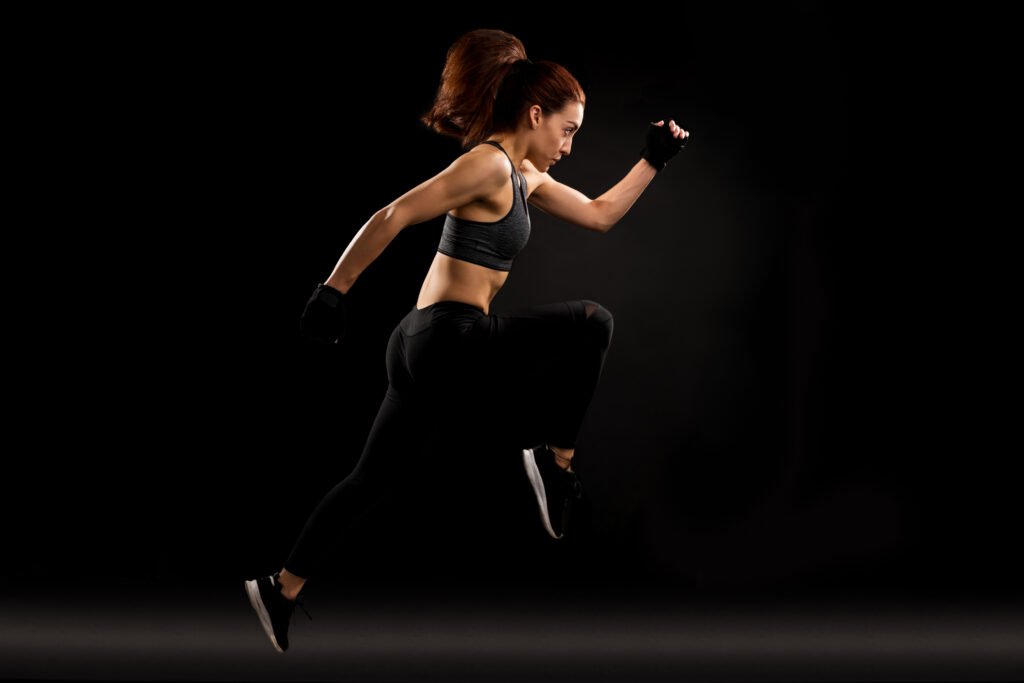
Certainly! Enhancing explosive power through plyometric exercises is a key component of athletic training for many sports. Exercises such as box jumps, depth jumps, and bounding drills are specifically recommended for their effectiveness in increasing muscle power and speed. Box jumps, for instance, engage the lower body muscles in a powerful upward thrust, helping athletes to develop the explosive strength crucial for sports like basketball and volleyball. Depth jumps further enhance this explosive capability by training the body to react and jump immediately upon landing, simulating the quick movements needed in sports such as soccer or tennis. Bounding drills, which focus on repetitive, powerful strides, are ideal for sprinters and long-jumpers seeking to increase their propulsive force. Incorporating these targeted plyometric exercises into a training routine can lead to significant improvements in an athlete’s performance by fostering greater force production and agility—key attributes for excelling in competitive sports environments.
4. How often should athletes perform plyometric training to see improvements in sports performance?
The frequency of plyometric training can vary depending on the athlete’s experience level, sport, and training goals, but generally, incorporating plyometrics two to three times per week can lead to significant improvements in explosive power and sports performance. It’s important to allow for adequate recovery time between sessions, as plyometrics place a high demand on the musculoskeletal system. For beginners, starting with one to two sessions per week with a focus on proper form and gradually increasing intensity is recommended. More advanced athletes can benefit from integrating higher intensity plyometric exercises into their routine more frequently, as long as they maintain proper technique and recovery protocols. Consistency, progression, and listening to one’s body are key to maximizing the benefits of plyometric training for enhanced athletic performance.
5. Are there any safety tips or precautions to consider when starting a plyometric training program?
| Safety Tip | Description |
|---|---|
| Warm-Up Properly | Begin with dynamic stretches and low-intensity exercises |
| Start Slow | Begin with simpler exercises and gradually increase intensity |
| Wear Proper Footwear | Choose shoes with adequate cushioning and ankle support |
| Focus on Form | Maintain proper technique to prevent injury |
| Allow Recovery Time | Rest between sessions to allow muscles to recover |
| Use Soft Surfaces | Perform exercises on cushioned surfaces to reduce impact |
Before delving into a plyometric training program, it is crucial to consider several safety tips and precautions to ensure optimal performance and minimize the risk of injury. Firstly, individuals should perform a thorough warm-up and dynamic stretching routine to prepare their muscles and joints. It’s essential to start with exercises that match one’s current fitness level, gradually increasing intensity and complexity to avoid overexertion. Suitable footwear with adequate support and cushioning is vital to absorb impact forces. Athletes should maintain proper form and technique throughout exercises, perhaps under the guidance of a certified trainer, to maximize benefits and minimize strain. Additionally, allowing sufficient rest and recovery time between sessions helps prevent overtraining and muscle fatigue. By incorporating these safety measures, athletes can effectively harness plyometric training’s power to enhance their explosive power and elevate sports performance.







